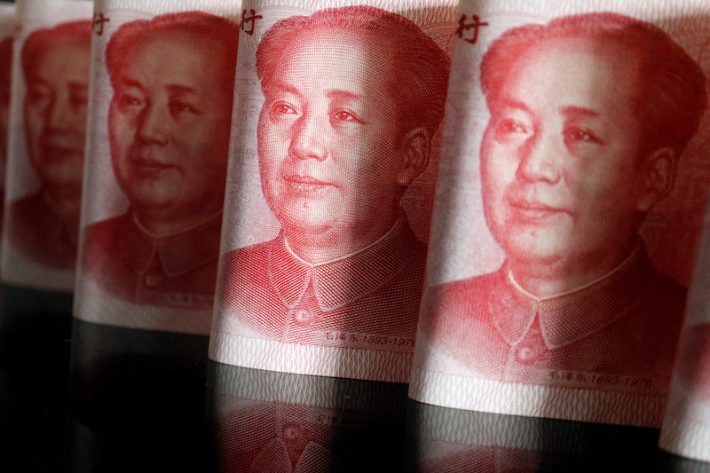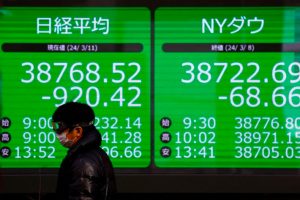China’s yuan rebounded vigorously late on Wednesday to close its domestic trading session at its highest for two weeks, when traders and corporates began selling long dollar positions.
Market participants became wary after state-owned banks were seen selling the dollar in the previous session to stabilise the currency, traders said, creating an impression that the yuan may have hit stabilised for the time being.
Sources said big banks sold dollars in both onshore and offshore markets in late trade on Tuesday to prop up the weakening yuan.
But they noted that it was unusual for China’s big banks to be active in onshore trades during London or New York trading hours, saying they typically dealt in the offshore yuan and used it to steer the onshore counterpart.
The onshore yuan finished the domestic trading session at 7.1825 per dollar, the strongest close since October 12, up 827 pips from the previous late night close of 7.2652.
It also looks set for the biggest daily rise in percentage terms in two years.
Its offshore counterpart traded at 7.2151 at around 0830 GMT.
“Corporate clients started to settle their dollar receipts,” said a trader at a foreign bank, adding such dollar-to-yuan conversions supported the local unit and prompted other market participants with stop-loss orders to limit losses from long dollar positions.
“There was a stampede in the market in afternoon trade,” said a trader at a Chinese bank.
ALSO SEE:
All-Powerful Xi Jinping Faces Raft of Third Term Headaches
Fed Seen Slowing Rates Soon
The yuan’s advance occurred on a day when the US dollar index dipped by 0.69% to 110.15.
Currency traders said market speculation that the Federal Reserve would slow its interest rate rises also lent some support to the yuan.
Market watchers predict another 75 basis point rate increase next Wednesday, but signs of economic weakness in the United States are fanning speculation it may opt for smaller increases from December.
The strong dollar, which is being fuelled by aggressive US Federal Reserve tightening, and worries over the ailing Chinese economy have pressured the yuan this year.
The onshore yuan has lost about 11.5% against the dollar so far this year and looks set for its biggest annual drop since 1994, when China unified markets and official rates.
China‘s third-quarter economic growth was faster than expected, helped by a raft of government support measures. But its strict zero-Covid stance, a prolonged property crisis, and weak consumer demand are clouding the outlook.
Prior to the market opening on Wednesday, the People’s Bank of China (PBOC) set the midpoint rate at 7.1638 per dollar, 30 pips firmer than the previous fix 7.1668.
In the spot market, the onshore yuan opened at 7.2949 per dollar and was changing hands at 7.2885 at midday, 233 pips or 0.32% weaker than the previous late session close.
Wednesday’s official guidance, which limits the onshore yuan to trade in a narrow range of 2% around that level, kept the daily range from 7.0205 to 7.3071.
“The PBOC still has the ability to defend the yuan if they choose to, especially if the CFETS Index continues to weaken towards the bottom end of the trading range,” Khoon Goh, head of Asia research at ANZ, said.
The CFETS index, a gauge that measures the yuan’s value against a currency basket of China‘s trading partners, fell to a new five-month low of 100.19 on Wednesday and has lost 2.2% year-to-date, according to a calculation based on official data.
- Reuters with additional editing by Jim Pollard
NOTE: This report was updated and the headline changed on October 26, 2022 with details from afternoon trading.
ALSO SEE:
China’s Yuan Drops Near 15-Year Low After Investors’ Sell-off
Unveiling of ‘Team Xi’ Spurs Hong Kong Stock, Yuan Plunge
China’s New Leaders Unveiled in Beijing, Li Qiang No-2
























